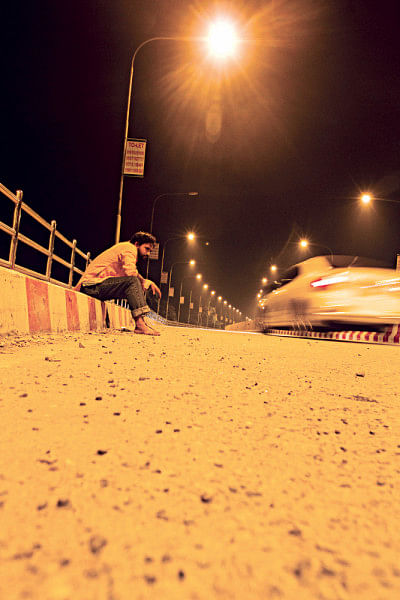A city in fiction

The capital of Bangladesh has been given many names. Writers, poets, artists, and musicians all have had their go at Dhaka and each painted a picture of the city in light of how they perceived it. Yet, Dhaka remains Dhaka. Perhaps not the "same old Dhaka", but still interesting all the same.
THE LONELY METROPOLIS
Humayun Ahmed painted different views of Dhaka that were quite convincing. In "Kothao Keu Nei" for instance, the reader is introduced to a city that makes the dwellers feel the solitude of a bustling metropolis. The city seems busy where nobody has time for anyone else, and underneath this cruel reality, the very people that we know are in a constant bond with each other. Yet, when the time comes, one stands alone. It's a depiction that is perhaps not the most detailed but stitched in reality and albeit a bit tragic, even for fiction.
DREAMY CITY
Perhaps, Himu brings a dreamier version of Dhaka as he aimlessly roams the streets. Himu's choice of attire is a yellow panjabi, which should look dreamier under iridescent traffic lights. Sodium lights have that going on for them, they make everything seem surreal.
A stroll down Elephant Road or Fuller Road under sodium lights does sound ethereal. Unfortunately, the halogen lights have been replaced. While the new street lamps offer a better view of the roads, it's just not as enticing.

THE UNIVERSITY
Ahmed Sofa's works heavily focused on Dhaka, and most of his stories were set either in or around the Dhaka University campus. It is difficult to determine which bit of Sofa's work is real and which is fiction. Regardless, his idea of Dhaka was not far off. In one book, there's a line that goes -- "There are more poets in Dhaka than there are crows". If there's one avian creature that is constant in Dhaka, it's the crow. So, make of that line what you will.
AN UNYIELDING DHAKA
In "Rifle, Roti, Aurat", Anwar Pasha also describes Dhaka but that's a very different and somewhat scary view of Dhaka. It's a Dhaka in the aftermath of "Operation Searchlight" and it's a blood-soaked depiction. Yet, coherently the locations in Dhaka city build an image in the reader's mind of a metropolis as a whole. The damage that Dhaka suffers yet still stands; it feels like the city itself is a character.
REALITIES OF OUR URBAN EXISTENCE
Of course, there are many more admirable depictions of Dhaka, but none of them are comparable to the one found in "Chilekothar Sepai" by Akhtaruzzaman Elias. The book paints a picture of the city in light of the 1969's revolution, particularly Old Dhaka -- a place that is often mentioned in stories but not explored enough.
Elias, who is well known for his ability to use details with mastery in his writing, uses that skill to show us a picture of Old Dhaka that is probably true to this day.
The troubles of living as a single man in Dhaka, the troubles of living in a "Chilekotha", or the reality of slums -- you can find them all in this depiction.
Dhaka as the centre point of the country, plays host to people from every corner of the world -- making it a unique place where different characters can collide and yet exist in equilibrium. Elias paints that picture of people from different classes in Dhaka and the physical place in Dhaka. The result? A literary masterpiece.

 For all latest news, follow The Daily Star's Google News channel.
For all latest news, follow The Daily Star's Google News channel. 



Comments